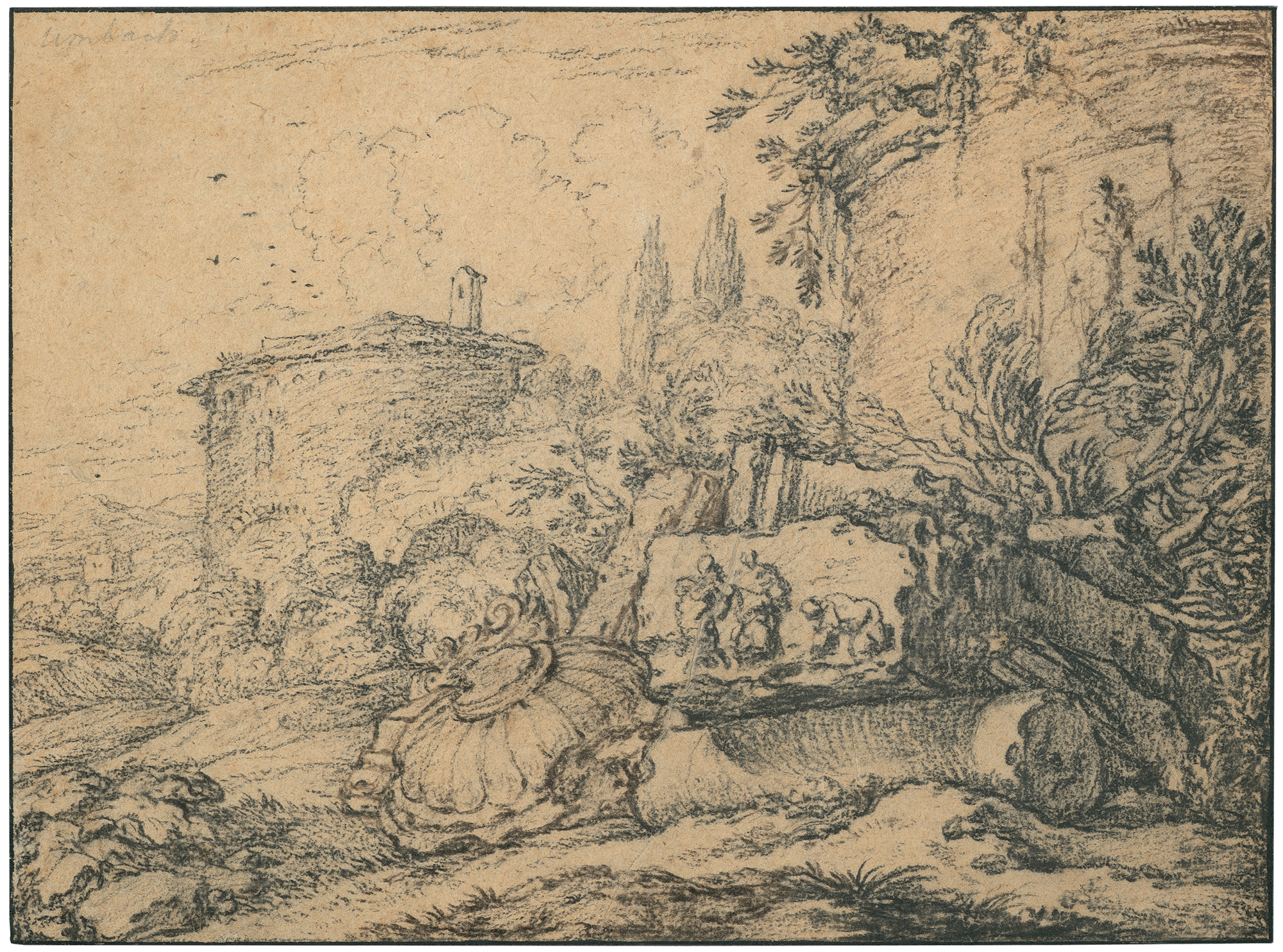Loading the page ...
Jonas Umbach
(circa 1624–1693, Augsburg)
A Southern Landscape with Ancient Remains. Black and some brown chalk on brownish paper. 19.7 x 26.5 cm.
The painter, draughtsman and etcher, Jonas Umbach, was the son of a brass-worker of the same name who was caretaker to the Fuggers in Augsburg. No precise details of his training are known, but the first drawings he made around 1645 indicate that he was familiar with Dutch art. Nor is there any documentary evidence of a visit to Italy. Umbach possibly derived his motifs from prints by Dutch Italianates. If Umbach did indeed go to Italy, it must have been between 1645 and 1652, because he was given citizenship of the city of Augsburg in 1653. Throughout his life Umbach was mainly active in his native city, where he quickly achieved considerable fame. He was appointed painter to the Apostolic Chamber and was a member of the city’s Grand Council. He distinguished himself as a painter of historical scenes and was a prolific draughtsman and etcher.
Seen through modern eyes, Umbach’s reputation rests primarily on his landscape drawings. These are not realistic reproductions but carefully composed ideal landscapes which the artist created in ever-changing variations. The sublime solitude of nature and the transience of earthly things appear to have exerted a particular fascination for him. At first glance the composition of our drawing appears artificial, yet the work betrays a spontaneous, untrammelled feeling for nature and a keen sense for the rendering of light and atmosphere. The artistic, compositional structure is identical in almost all Umbach’s landscape drawings. The foreground with a pronounced graphic emphasis – in our case an artificial arrangement of overgrown remnants of ancient architecture – opens in the middle ground into a lighter treated part which blends into the lightly sketched background. The tinted paper, the discriminating use of different types of chalk and the fine wipes give the sheet patina and brilliance.
Drawings of this kind were not intended as preliminary studies for paintings. Considered to be works of art in their own right, they were much in demand among collectors. From the collections of Karl Eduard von Liphart (Lugt 1687) and Reinhold von Liphart (Lugt 1758).
